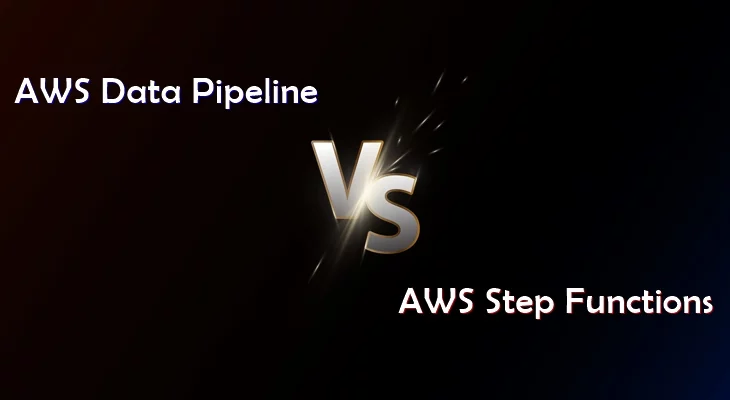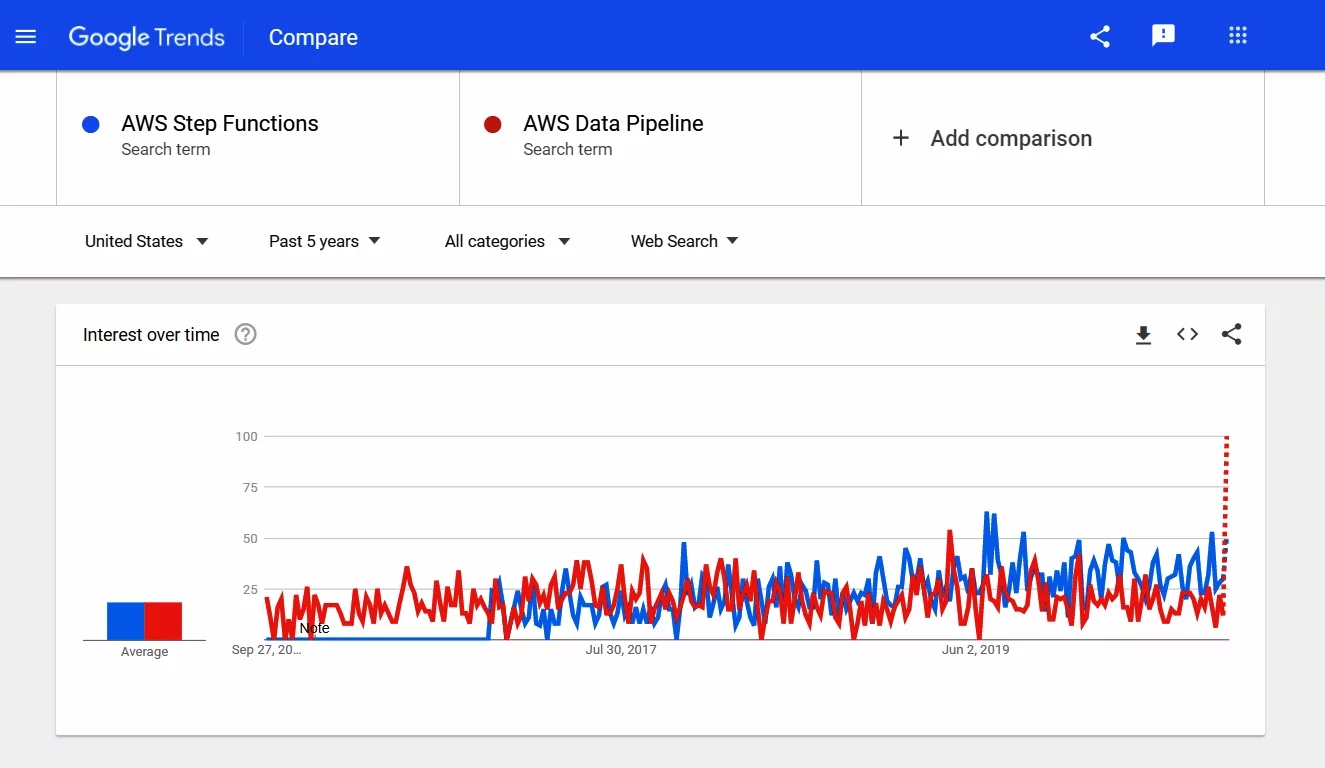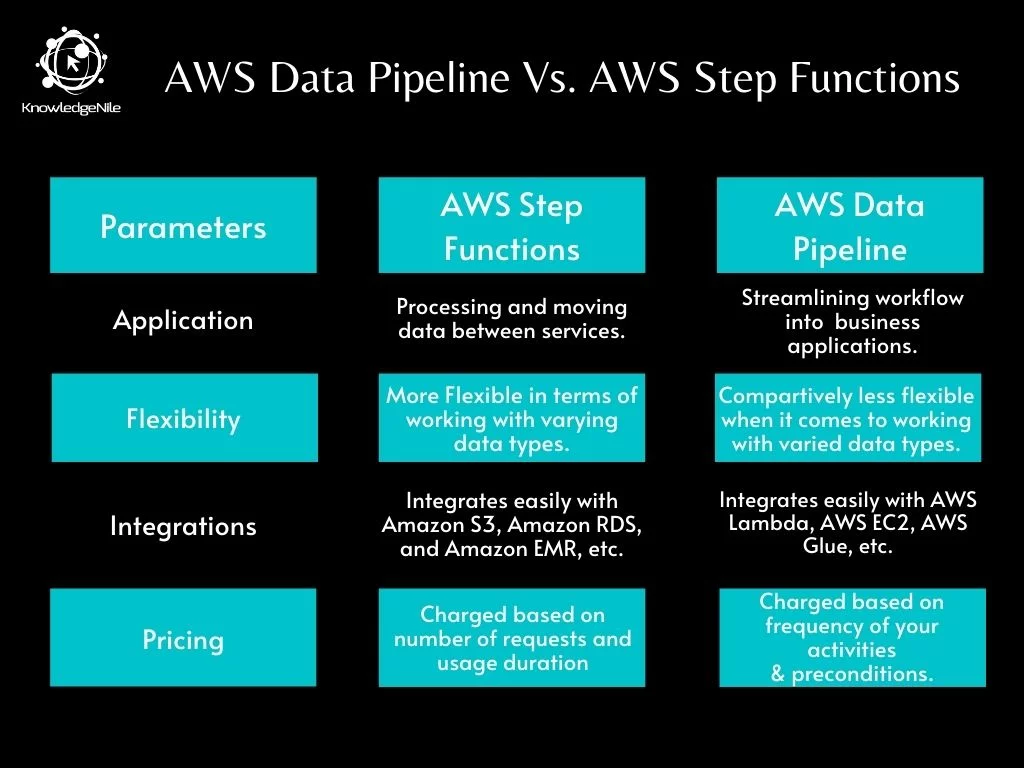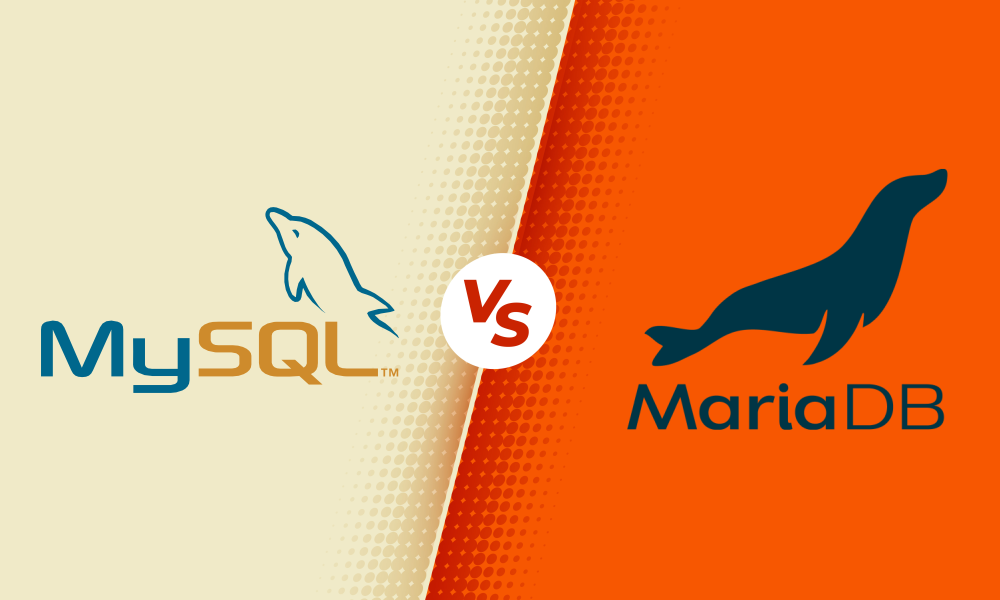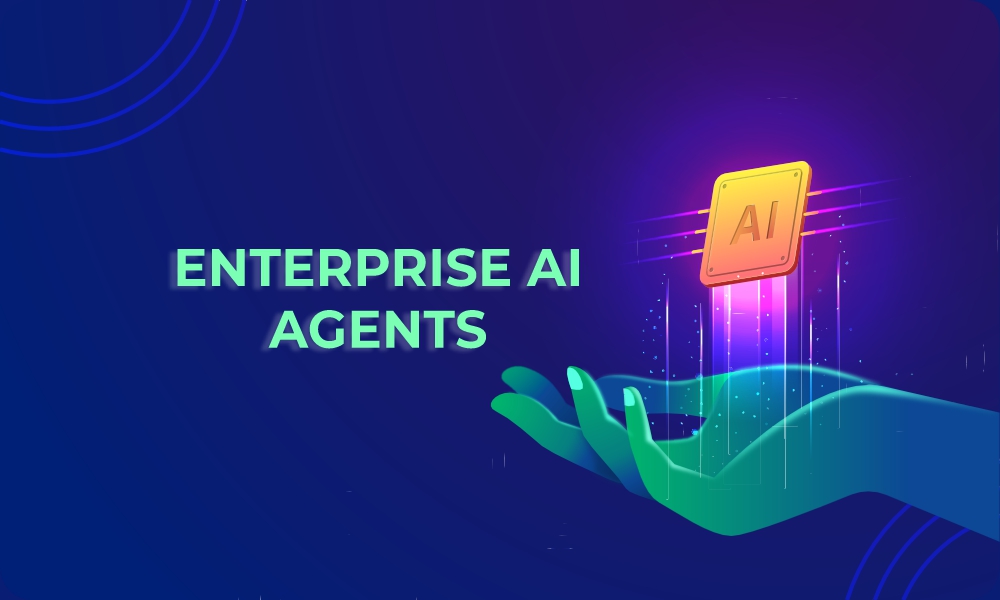As a tech enterprise, AWS Data Pipeline vs. Step Functions developing business-critical applications and managing the data there of is a major challenge. Ensuring the proper use and management of data is also imperative.
Today's need for organizations is for effective tools to assist in developing applications and ensuring effective workflows are in place.
AWS has been a major force in the data and workflow segment for quite some time. We will be looking at two of their offerings, AWS Step Functions, and AWS Data Pipeline, and drawing comparisons among the two.
Building business-critical applications is always a challenge. Lack of proper tools to assist with it was a gap that the industry was reeling with for some time.
Now, with AWS Step Functions, enterprises can develop effective applications to further their business.
AWS Step Functions is a serverless orchestration service that enables you to integrate many AWS services, such as AWS Lambda.
It helps you create workflows for your various applications. It uses state machines and tasks underpinnings.
Here, a task refers to a single work unit performed on the service platform.
It is possible to directly call AWS Lambda functions from a task in AWS Step Functions. The input to the next step is dependent on the output of the earlier function.
AWS Data Pipeline is a service that lets you streamline your data workflows. It provides a simple management platform for your data-driven workflows.
AWS Data Pipeline provides an easy system to process and move data between various data sources and storage services.
Its graphical UI provides the user with a drag-and-drop console to create pipelines. It also provides the user with a library of templates that help with creating pipelines for more complex applications.
Both AWS Data Pipeline and AWS Step Functions reduce organizations' efforts to streamline their processes and systems.
Enriched with a user-friendly graphical interface, both the services work to reduce the complexity of handling complex code while designing your business applications.
While the similarities are as above, a few points of differences between the two are as follows:
Application Area
AWS Data Pipeline works with processing and moving data between services.
AWS Step Functions, on the other hand, works with streamlining your workflow into your business applications.
AWS Data Pipeline can help you easily process data on various AWS services such as S3, RDS, and EMR, among others.
With AWS Step Functions, you can integrate functions from various AWS services such as AWS Lambda, AWS EC2, AWS Glue, and so on.
Essentially, AWS Step Functions is a generic way of designing and executing workflows. AWS Data Pipeline is more concentrated on working with data workflows.
However, AWS Data Pipeline is a tad bit more rigid when it comes to working with specific types of data. If the data format is not supported, then to use that data, you will need to tinker around with shell scripts.
AWS Step Functions, on the other hand, are more flexible and have better integration with other AWS services. This implies that it allows easy integration with the help of serverless APIs.
AWS Step Functions and AWS Data Pipeline both charge you according to your usage of their services.
AWS Step Functions charges you based on the number of requests and the duration it takes for your workflow to execute.
It charges you $1 per 1M requests received while executing your workflow. It has dynamic pricing based on usage for the duration. (we can write something like "You can check here for more details" or something)
AWS Data Pipeline, however, charges you based on the frequency of your activities and preconditions.
You can run three low-frequency preconditions and five low-frequency activities at no charge.
You are charged at $1 and $2.50 per month for high-frequency activity and preconditions, respectively. For low frequency, the rates are $0.60 and $1.50 for activities and preconditions, respectively.
Although AWS Data Pipeline has been around for longer, AWS Step Functions has surpassed AWS Data Pipeline in terms of popularity.
Both have witnessed some major fluctuations in their statistics. While AWS Data Pipeline has been going steady, the graph for AWS Step Functions is witnessing an upward growth.
Conclusion
Both tools from the AWS stables add substantial value for enterprises. It eventually depends on the organizations as to which tool helps them better.
If they lack a tool to use data effectively, then AWS Data Pipeline is for them.
At the same time, if the organization is looking to optimize their workflows more, AWS Step Functions is a better fit.
You may Also Like to Read:
AWS Data Pipeline vs. AWS Glue: Which One is Better?

